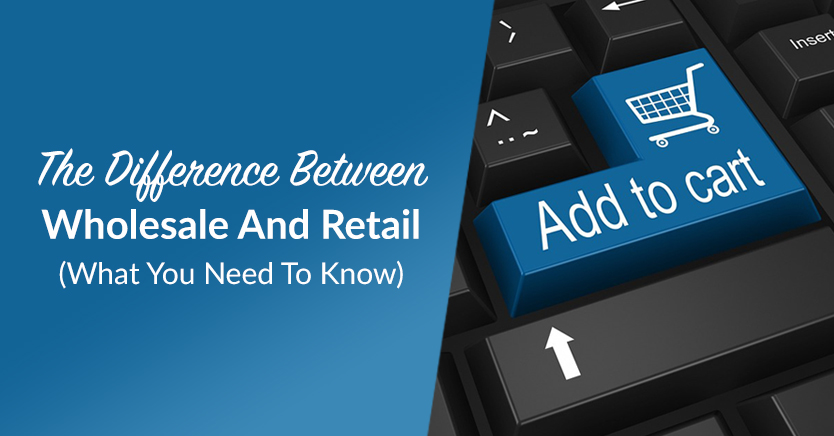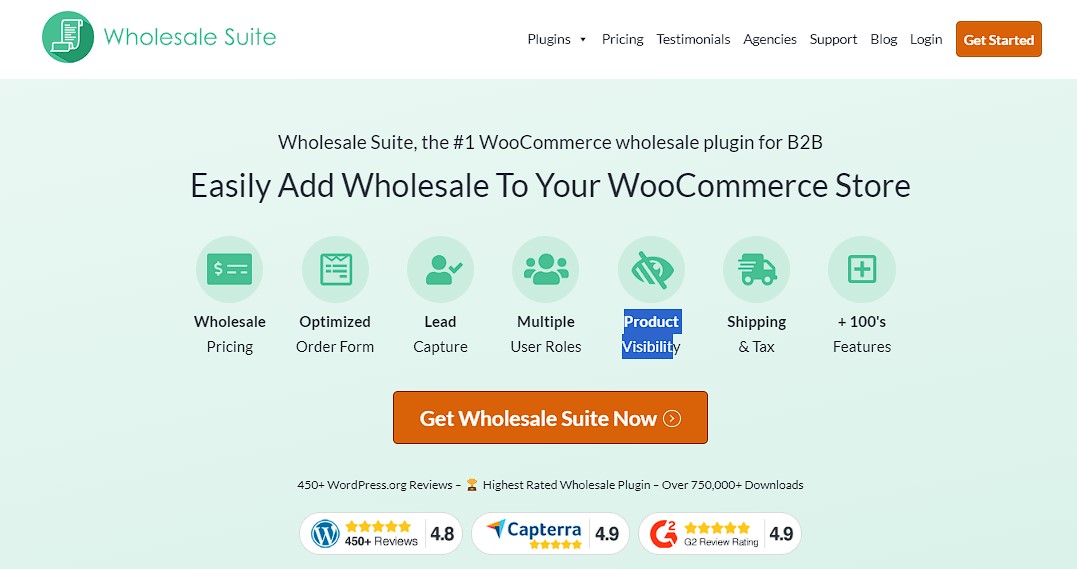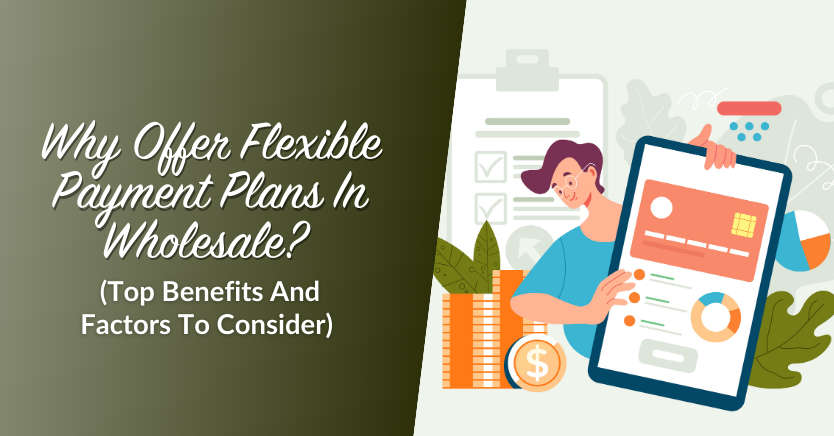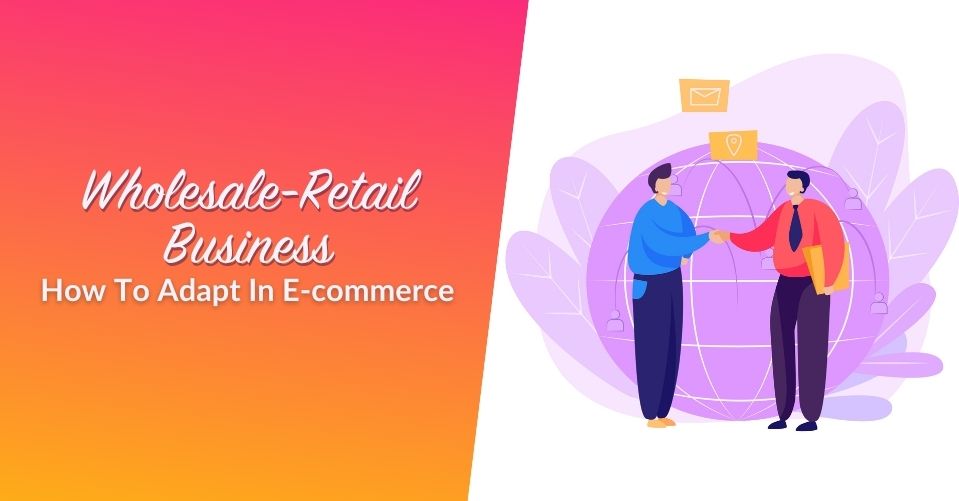
The world of business is changing rapidly and many businesses are now moving online. To stay competitive, your current business model must adapt to the changing e-commerce landscape in the wholesale-retail business.
But is it possible to combine these two? How can you do this? First, you need to understand what e-commerce is and how is it changing these days. You should set up strategies for growth and long-term opportunities for your store. After that, know how you can effectively reach out to different customers through digital marketing. This way, you can expand your market and improve sales at the same time—like hitting two birds with one stone.
In this article, we will explore how wholesale and retail business model can be a game changer in adapting from today’s e-commerce trends. We will discuss the steps you need to take. And finally, we will tackle some tips on how you can bring this vision online.
If you’re eager to know more, keep reading!
Wholesale Vs Retail: How Do They Differ?
The main difference between wholesale and retail is who they sell to. Wholesale businesses sell products in large quantities to other businesses, like retail stores. In contrast, retail businesses sell products directly to the end consumer.
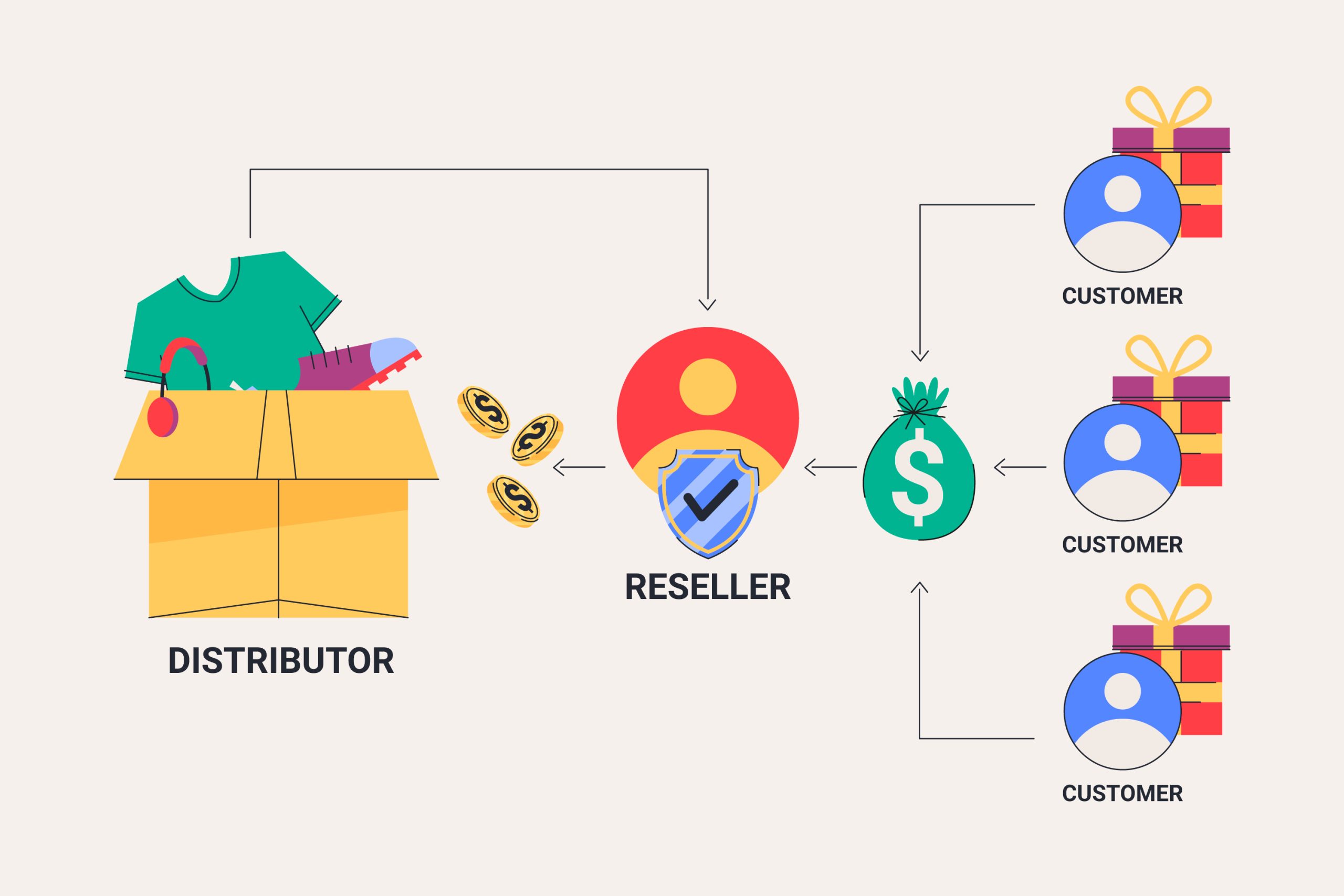
Wholesale is a business-to-business (B2B) process. Wholesalers buy large amounts of goods from manufacturers or distributors. Then, they resell these goods in bulk at discounted prices to other businesses.
On the other hand, retail is a business-to-consumer (B2C) process. Retailers purchase goods in bulk from wholesalers, distributors, or manufacturers at lower prices. After that, they sell the products individually to consumers at higher prices. This way, they make a profit from each sale.
If you want to have an in-depth discussion regarding wholesale and retail business differences, you may check our article here:
Can Your Business Thrive By Combining Wholesale And Retail?
The answer is YES! You can do both wholesale and retail. Many large businesses don’t stick to just one. Instead, they take part in every aspect of the commerce supply chain.
For example, companies like Samsung, IKEA, and Lego do it all. They design, manufacture, distribute, wholesale, and retail their own products.
Let’s look at Samsung in action. First, Samsung buys materials and parts from suppliers to make its products. Then, after manufacturing, it sends the products to its retail stores and warehouses.

From there, it sells products directly to consumers in stores and online. But that’s not all. Samsung also sells its products wholesale to other retailers like Best Buy and Amazon.
It’s also worth mentioning that some big retailers create their own best-selling products. This way, they profit at each stage of the commerce supply chain.
Getting Started With Wholesale-Retail Business
Starting a business that caters both wholesale and retail can be both exciting and challenging. Here are tips to help you get started:
1. Choose the right products
First, you need to choose the products you want to sell. Think about what customers need and what’s popular right now. You might consider items that are in high demand or have a unique appeal.
2. Create a business plan
Next, create a detailed business plan. This plan will help you set clear goals and figure out how to reach them. Include your budget, target market, and marketing strategies. A good plan acts like a roadmap for your business journey.
3. Register your business
Then, you need to register your business and get the necessary licenses and permits. This step is important because it makes your business legal. Check with local and national authorities to know what documents you need.
4. Find reliable suppliers
After that, find reliable suppliers or manufacturers. Good suppliers will provide quality products at fair prices. Building strong relationships with suppliers is key. This is important for both your wholesale and retail operations.
5. Decide on sales channels
Then, decide how you will sell your products. You can open a physical store, set up an online shop, or do both. Having an online presence can help you reach more customers. Creating a user-friendly website is a great way to start.
6. Manage storage and inventory
Next, think about storage and inventory management. You will need space to store your products, especially if you are buying in bulk. Keeping track of your inventory helps prevent running out of stock or overstocking items.
7. Develop a marketing plan
After that, develop a marketing plan to promote your business. Use social media, flyers, and advertisements to let people know about your products. Offering special deals or discounts can attract new customers.
8. Provide excellent customer service
Finally, provide excellent customer service. Happy customers are more likely to return and tell others about your business. Listen to their feedback and make improvements when needed.
How Can Wholesale-Retail Businesses Adapt And Thrive?
Wholesale-retail businesses need to change with the times. By having an online shop, you can reach customers all over the world. In this case, businesses should use digital tools to manage their business better, which includes using software for inventory, pricing, shipping, and sales tracking.
Moreover, it’s important to focus on the customer experience. This means making sure the website of your business is easy to use and works well on phones and tablets. Also, offering good customer service is key; customers like quick responses to their questions and problems.
Furthermore, businesses should keep an eye on new technologies and trends. For example, using data can help you understand what your customers want. This way, you can offer products that people are looking for.
In line with that, here are some e-commerce trends you should be able to adapt to in your business.
Trends in e-commerce
1. Mobile shopping is growing
More people are using their phones to shop online. In fact, many prefer using mobile devices over computers. This trend means that websites need to work well on small screens. If a site is hard to use on a phone, customers might leave.
Furthermore, mobile shopping allows people to buy things anytime and anywhere. They can shop while on the bus or waiting in line. This convenience makes mobile shopping very popular.
2. Personalization is important
Customers like it when stores remember them. For example, they enjoy getting product recommendations based on what they’ve bought before. Personalization makes shopping feel special. Moreover, personalized emails and messages can make customers feel valued. When businesses send offers that match a customer’s interests, they are more likely to buy.
3. AI and chatbots
Artificial intelligence (AI) and chatbots are helping businesses serve customers better. Chatbots can answer questions quickly, even when stores are closed. This means customers get help right away. Additionally, AI can help businesses understand shopping patterns. By analyzing data, AI can suggest which products to stock up on. This helps businesses meet customer needs.
4. Social commerce
People are buying products directly through social media platforms. For example, they can click on a product in a social media post and buy it instantly. This makes shopping easy and fun. Also, social media allows businesses to reach more people. By sharing products on platforms like Instagram and Facebook, they can easily attract new customers.
5. Sustainable shopping
Customers care about the environment more than ever. They prefer to buy products that are eco-friendly. This means items that are made in ways that don’t harm the planet. Furthermore, businesses that show they care about the environment can build trust with customers. Offering sustainable products can improve a company’s image.
Tips to cope with these e-commerce trends
1. Optimize for mobile devices
First, make sure your website works well on phones and tablets. This means the site should load quickly and be easy to navigate. If buttons are too small or pages take too long to load, customers might get frustrated. Additionally, consider creating a mobile app. An app can make shopping even easier for customers. It can also send notifications about sales and new products for instant updates.
2. Personalize the shopping experience
Use customer data to make shopping personal. For example, show products based on what they’ve looked at before. This makes customers feel understood.
Also, try to make it a norm to send out personalized emails. If a customer left items in their cart, remind them. Offer special discounts on their favorite products. This can encourage them to complete the purchase.
3. Use AI and chatbots
Implement AI tools to help your business. Chatbots can answer common questions quickly. This saves time for both you and the customer. Furthermore, use AI to analyze sales data. This helps you know which products are popular. Then, you can stock more of what customers want.
4. Sell on social media
Start selling your products directly on social media platforms. Set up shops on Instagram and Facebook. This way, customers can buy without leaving the app. Also, make it to a point that you are able to share engaging content on your platforms. Post pictures and videos of your products and encourage customers to share their own photos using your products. This can increase your reach and impression.
5. Offer sustainable products
Include eco-friendly items in your inventory. Use materials that are good for the environment. For example, sell products made from recycled materials and tell your customers about your efforts to be green. You may also share stories about how your products are made. This can build trust and attract customers who care about sustainability.
6. Enhance website security
Make sure your website is safe and secure. Customers want to know that their personal information is protected by using secure payment gateways and SSL certificates. Moreover, regularly update your website’s security features. This helps prevent hackers from accessing customer data. A secure website builds customer confidence.
7. Provide multiple payment options
Offer different ways for customers to pay. Some people prefer using credit cards, while others like PayPal or digital wallets. Additionally, consider accepting newer payment methods like Apple Pay or Google Pay. The more options you provide, the easier it is for customers to complete their purchases.
8. Improve delivery and shipping options
Provide fast and reliable shipping. Customers appreciate quick delivery times. Offer different shipping options, such as express or standard shipping. Furthermore, it is important to provide tracking information. This allows customers to see where their package is and that good shipping services can lead to repeat business.
9. Collect and use customer feedback
Ask customers for their opinions. Use surveys or feedback forms to learn what they like and don’t like. Additionally, you can use this information to improve your products and services. When customers see that you listen to them, they feel valued.
10. Invest in search engine optimization (SEO)
Make sure your website appears in search engine results. Use keywords that customers might search for. By creating quality content like blog posts or product descriptions with good SEO practices, you can increase the chances of more people to find your website.
How Wholesale Suite Can Help Your Business Thrive
To thrive in the e-commerce world, wholesale-retail businesses can use tools like Wholesale Suite. Wholesale Suite is a set of plugins for WordPress and WooCommerce websites. It helps businesses manage their wholesale customers and products more easily.
Here’s how:
1. Personalize the shopping experience
With Wholesale Suite, you can create personalized pricing and discounts for different customer groups. For example, you can offer special prices to your loyal wholesale customers. This makes them feel valued and encourages them to buy more.
2. Provide multiple payment options
With Wholesale Suite and WooCommerce, you can offer various payment methods. Accept cards, PayPal, and other payment gateways. This flexibility makes it easier for customers to complete their purchases.
If you want to learn more about flexible payments, you may read our article here:
3. Improve delivery and shipping options
Wholesale Suite allows you to set up different shipping rates for wholesale customers. You can offer free shipping options which can make your business more attractive to wholesale buyers.
4. Simplify wholesale pricing
This plugin allows you to set different prices for wholesale customers. You can easily manage pricing rules and offer discounts. This means you can serve both retail and wholesale buyers on the same website without confusion.
5. Manage wholesale customers
You can approve and organize wholesale customer registrations. This helps you keep track of your important business clients. You can also create custom registration forms to collect the information you need.
Frequently Asked Questions
1. What business is an example of a wholesaler?
An example of a wholesaler is McLane Company. They buy products in large amounts from manufacturers. Then, they sell these products to grocery stores and other retailers. Another example is Ingram Micro. They purchase electronics from makers and sell them to retail stores.
2. What is an example of wholesale sales?
Wholesale sales happen when a business sells goods in bulk to another business. For instance, a farmer sells a large shipment of vegetables to a supermarket chain. The supermarket then sells the vegetables to customers. Also, a clothing manufacturer selling many shirts to a retail store is an example of wholesale sales.
3. What is wholesale and retail trading?
Wholesale trading is when businesses buy goods in large quantities from producers. Then, they sell these goods to other businesses, like retailers. Retail trading is when businesses sell products directly to the final customers. In other words, wholesalers sell to retailers, and retailers sell to consumers.
4. What is the difference between a wholesaler and a reseller?
A wholesaler buys products in bulk from manufacturers and sells them to other businesses. They usually do not sell directly to consumers. A reseller buys products and sells them again. Resellers can be retailers who sell directly to consumers or businesses that sell to other businesses. So, the key difference is that wholesalers focus on bulk sales to businesses, while resellers can sell to both businesses and consumers.
Conclusion
By understanding the differences between wholesale and retail—and knowing that you can combine both—you can expand your market and improve sales. Starting a combined business model involves careful planning, choosing the right products, and embracing online sales channels.
In this article, we discussed how businesses can adapt both wholesale and retail business model to current e-commerce trends:
- How do wholesale and retail differ
- Combining wholesale and retail
- Getting started with wholesale-retail business
- How can this business model adapt and thrive
- Trends in e-commerce
- Tips to cope with these e-commerce trends
Plugins like Wholesale Suite can greatly assist in this transition. It can simplify wholesale pricing, manage customer relationships, improve shipping options, and enhance the overall shopping experience. By leveraging such tools and following the tips provided, your business can successfully adapt to e-commerce trends, reach a wider audience, and achieve long-term growth and success.
Got questions regarding this article? Feel free to leave your comments below. We surely would love to hear from you!


